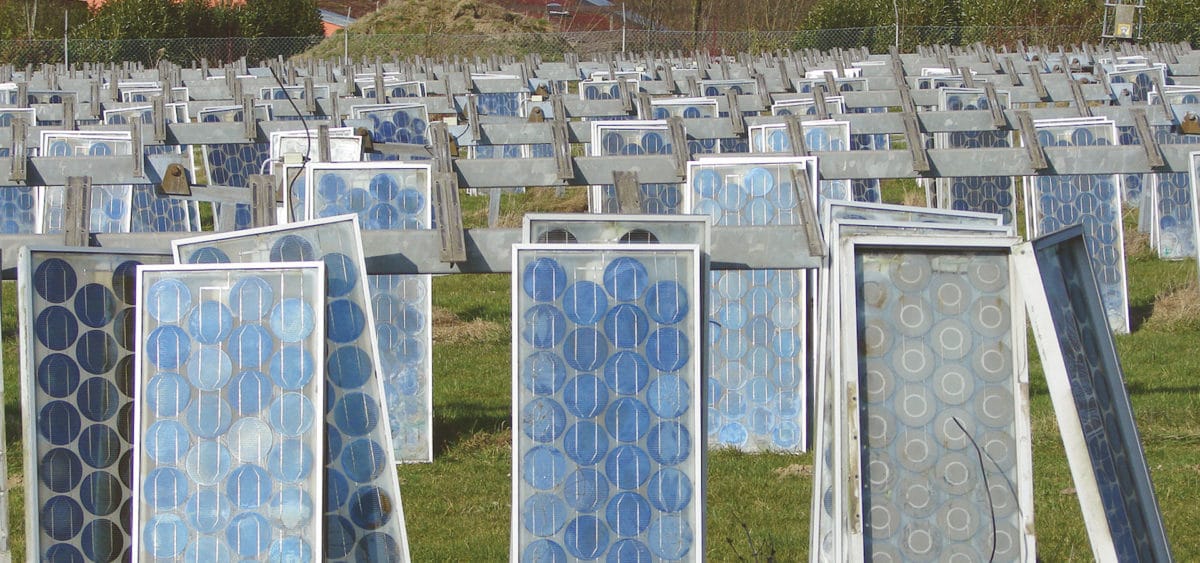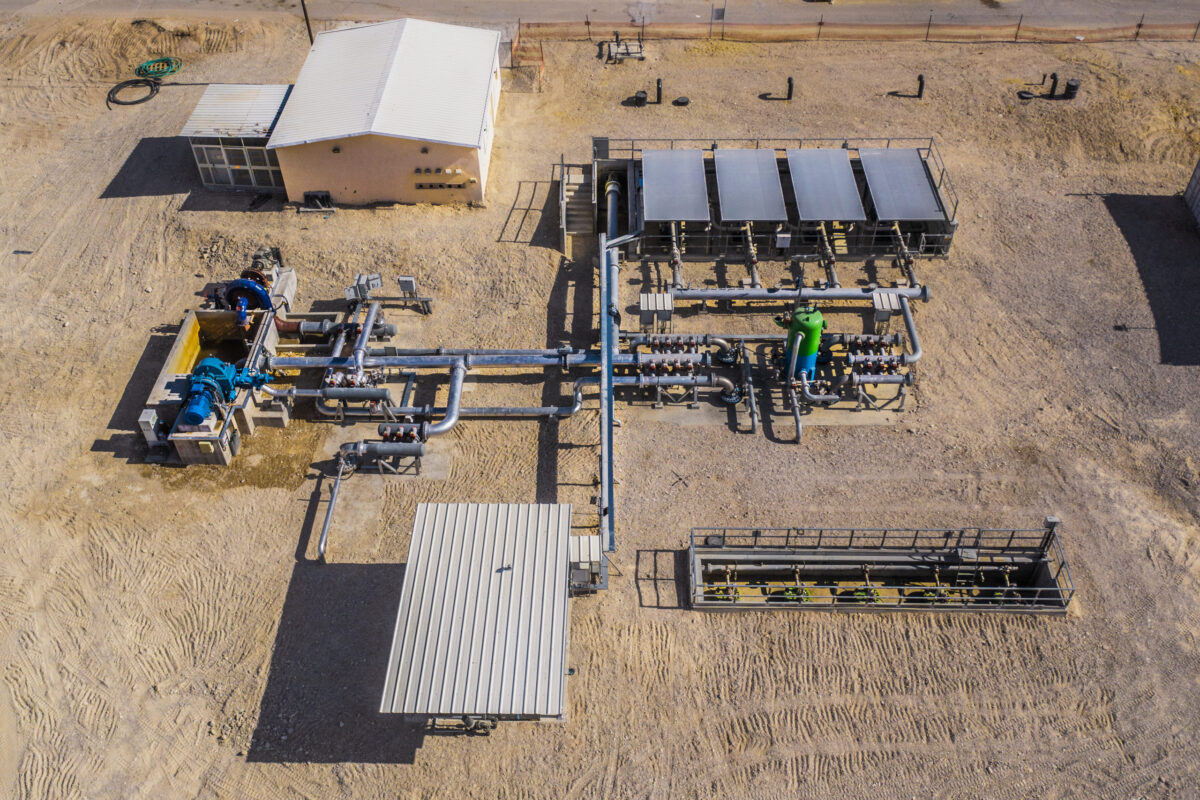From pv magazine USA
The solar industry cannot claim to be a clean energy source if it leaves a trail of hazardous waste. But, absent a cogent PV recycling policy, the United States risks sending millions of solar modules and tons of toxics to landfill in the coming years. A new initiative by Recycle PV Solar seeks to address this problem.
The U.S. solar industry continued its torrid growth in 2020, driven by market-leading pricing and climate change concerns. Industry expansion has been slowed, but not thwarted by the challenges of the Covid-19 pandemic and the financial weight of Trump-era import tariffs. Utility-scale and residential solar markets are booming, and the sheer number of solar modules being deployed is staggering.
The downside is that solar panels have finite lifespans, are difficult and expensive to recycle, and are being decommissioned in increasingly large numbers. The United States lags behind Europe and other regions in its PV recycling programs and policy progress, with the majority of unusable solar panels ending up in landfill.
EU vs. US
The European Union holds PV module installers accountable for their electronic waste and requires solar producers to recycle, while Japan holds project developers and owners liable for waste disposal and requires payment into a decommissioning fund. However, there is a vacuum when it comes to U.S. federal leadership on solar recycling and treatment of end-of-life PV modules. For now, the future of solar panel recycling is in the hands of the states.
Most notably, Washington state, under the leadership of Governor Jay Inslee, has a PV module stewardship and takeback program, which requires every PV module supplier to submit a recycling plan by July 2022. However, full implementation could be pushed back, pending recommendations from a stakeholder panel that will include industry and environmental groups.
Only one U.S. solar manufacturer – First Solar – has developed in-house recycling capabilities, currently limited to processing the company’s own thin film, cadmium telluride panels. The sole industry-wide recycling initiative, sponsored by the Solar Energy Industries Association (SEIA), has five additional recycling partners, with 12 locations, and three more pending, across the United States.
The solar waste regulations of five top solar U.S. states:
- California – PV modules will be considered “universal waste,” a lesser classification of hazardous waste that eases some transport issues and costs.
- North Carolina – Regulation N.C. H329, passed in 2019, addresses solar panel stewardship
- Arizona – Common waste regulation
- Florida – Common waste regulation
- Texas – Common waste regulation
In most cases, cables and aluminum frames are removed and the remainder of the module is sent to landfill. Solar module glass can be recovered – it accounts for the majority of weight in the solar module – but represents a very small portion of the module’s value. And since the glass contains metals, its second-use applications are limited. The high-value materials such as silicon, silver and copper, for the most part, are currently not being recycled in the United States.
A new project initiated in late 2019 by Recycle PV Solar (RPVS) and in collaboration with Europe-based PV Cycle, seeks to address these issues. “I’ve been part of the problem. I’m responsible for deploying millions of solar panels,” said CEO Sam Vanderhoof, a 40-year veteran of the solar industry. “For my buddies and I, in the early days at Schott and Sharp and Kyocera, our goal was ‘cheap.’ We didn’t think about end-of-life. The premise was we were selling green sustainable energy that lasts forever and doesn’t need maintenance.”
But as he points out, solar panels are not currently manufactured for disassembly and landfill is not green. “We made [solar modules] to last for 30 years and as a result it’s really difficult to pull out the materials. The state of solar recycling in the U.S. is: We pull off $1.25 to $1.75 worth of aluminum scraps from a module and the rest ends up in landfills. Our goal at RPVS is to pull out 94% to 95% of the material … at this point, the reclaimed materials do not cover the cost of the recycling.”
Cost vs. benefit
According to Garvin Heath, senior scientist at the National Renewable Energy Laboratory, it currently costs $20 to $30 to recycle a panel versus $1 to $2 to send it to a landfill, which is why he says research must focus on recovering solar-grade silicon to improve the economics of panel recycling.
In November, Jigar Shah, co-founder of Generate Capital, said that an extended producer responsibility approach – which makes the manufacturers of future waste responsible for disposal on behalf of their customers – could help when it comes to recycling.
“It’s far more cost effective for manufacturers to be forced to work together, to own recycling facilities in a joint fashion, where they try to greatly reduce the cost of all that collectively. That happens through policy. It doesn’t happen through people opting in,” said Shah.
Vanderhoof agrees. He says the Department of Energy should be spearheading the effort, addressing the renewable-energy-circular-economy today and not a decade from now. Legislation for PV panel waste could use earlier electronic waste legislation as a model, making manufacturers pay for their waste in advance and by forming a recycling fund, similar to PV Cycle, which established an upfront surcharge of $0.70 per solar panel.
There are further creative ways to handle recycling, such as factoring end-of-life processes and costs into power purchase agreement (PPA) and operation and maintenance negotiations. Off-takers and environmental, social and corporate governance investors also want to see sustainability across the supply chain, and regulators might be able to create market pricing mechanisms that enable high-value recycling.
Vanderhoof wants to see the establishment of a circular PV economy in the United States, which includes an “intelligent” reuse- recycling policy based on the 3Rs of reduce, reuse, and recycle, to create both business and economic development growth opportunities.
According to a 2016 report by the International Energy Agency (IEA) and International Renewable Energy Agency (IRENA), the economic benefits of a U.S. circular economy could be around $135.3 million in 2020, $1.4 billion by 2030, and $10.1 billion by 2050. “Economic multipliers would significantly increase these amounts,” said Vanderhoof.
Repowered and upgraded
While the recycling industry is aware of (if not prepared for) the waves of 25-year-old panels reaching end-of-life in the 2030s, the RPVS CEO identified another looming stream of used solar panels – systems that have been upgraded and repowered.
Vanderhoof noted that utility-scale solar investors are typically paid back at year seven. In year 12, they repower the project and receive a new investment tax credit. The PPA could be for 25 years, but the panels might be replaced at least once over the course of the project’s lifetime.
He claims that upgrading panels well before their useful life is over will increasingly apply to commercial solar rooftops and residential installs as well, because solar panels are also subject to weather damage – and we are experiencing more weather-related issues.
Overall, SEIA has said that around 140,000 solar panels are being installed per day in the U.S. BloombergNEF has further estimated that around 26,000 tons of PV panels will end up as waste this year. That number is going to grow into the millions of tons as waves of panels reach their end-of-life in the 2030s. Indeed, North America has more than 80 GW of solar installed and could see this number grow to more than 400 GW by 2030.
This content is protected by copyright and may not be reused. If you want to cooperate with us and would like to reuse some of our content, please contact: editors@pv-magazine.com.




Regarding solar panels that have been decommissioned at 12 years to be replaced by better ones: instead of scrapping them why not sell them for a price that just covers the cost of drawing public attention to their availability?
Good Point. at 12 years old, there is still 20+ years of useful life in them for off grid and RV projects…